The pressure range is the most complicated and confusing specification parameters to define for a pressure sensor. If you do not fully understand the different types of pressure that can be measured, you are likely to end up reading pressures inaccurately, or worse still, damaging the sensor before you have had a chance to correct the situation.
The two main questions that you need to ask yourself are, what is the range of pressure I need to measure over, and what baseline pressure will it be relative to?
Reference Pressure
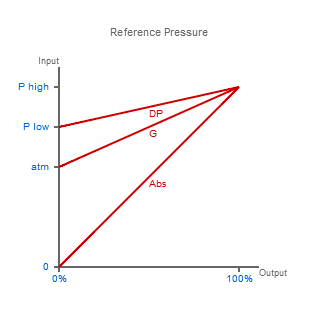
If you are measuring the direct pressure of a gas or liquid process then you will need either a gauge (g, rel) or absolute (abs, a) reference pressure range depending on whether you need to track relative to atmospheric air pressure changes (zero output = atmospheric pressure) or measure independently of atmospheric pressure changes (zero output = perfect vacuum). This will define the baseline pressure required, and will dictate the type of pressure sensor needed, since typically a pressure sensor will be manufactured to only measure gauge or absolute pressure, and cannot be modified once it has been built.
Featured gauge reference pressure sensor products
 IWPT Wireless Battery Powered Pressure Sensor and Receiver - Wireless battery powered pressure sensor and receiver system for connecting pressure sensors without wires to a central wireless receiver which converts each received pressure signal channel to a 1-5Vdc, 4-20mA output, USB, Ethernet TCP, RS232 RTU, RS485 RTU or 2G 3G 4G mobile cellular network.
IWPT Wireless Battery Powered Pressure Sensor and Receiver - Wireless battery powered pressure sensor and receiver system for connecting pressure sensors without wires to a central wireless receiver which converts each received pressure signal channel to a 1-5Vdc, 4-20mA output, USB, Ethernet TCP, RS232 RTU, RS485 RTU or 2G 3G 4G mobile cellular network.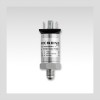 R134A Coolant Pressure Transducer For Automotive Air Conditioning - All welded voltage output pressure transducer for use on R134A refrigerant coolant gas used in automotive air conditioning systems.
R134A Coolant Pressure Transducer For Automotive Air Conditioning - All welded voltage output pressure transducer for use on R134A refrigerant coolant gas used in automotive air conditioning systems.
Featured absolute reference pressure sensor products
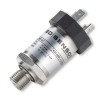 Marine approved atmospheric pressure sensor - Marine-approved pressure sensor for atmospheric pressure measurement on ships. 4-20mA output, 800-1200mbar range.
Marine approved atmospheric pressure sensor - Marine-approved pressure sensor for atmospheric pressure measurement on ships. 4-20mA output, 800-1200mbar range. Absolute Reference Voltage Output Pressure Transducers - High voltage output absolute pressure transducers are essential for precise pressure measurements in applications where a perfect vacuum serves as the reference point.
Absolute Reference Voltage Output Pressure Transducers - High voltage output absolute pressure transducers are essential for precise pressure measurements in applications where a perfect vacuum serves as the reference point.
If you are measuring pressure between two points such as either side of an extraction fan, or across a filter, then you will need a differential pressure (dp) sensor.
Featured differential pressure sensor products
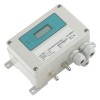 Measuring negative pressure in hospital construction zones with a low range differential pressure transducer - Low-range differential pressure transmitter provides the resolution needed to verify negative pressure in hospital construction vestibules, ensuring containment of dust and airborne contaminants.
Measuring negative pressure in hospital construction zones with a low range differential pressure transducer - Low-range differential pressure transmitter provides the resolution needed to verify negative pressure in hospital construction vestibules, ensuring containment of dust and airborne contaminants.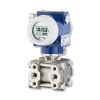 Vacuum pump inlet to outlet differential pressure sensor with 1500 Torr range - Differential pressure sensor to measure the differential pressure between the inlet and outlet of a vacuum pump.
Vacuum pump inlet to outlet differential pressure sensor with 1500 Torr range - Differential pressure sensor to measure the differential pressure between the inlet and outlet of a vacuum pump.
Pressure Units
Pressure ranges are typically specified by the manufacturer in bar (bar)or pounds force per square inch (psi) for medium to high pressures, and millibars (mbar), hectopascals (hPa), pascals (Pa) or inches of water column (inH2O, inWG, inWC) for low pressures. If your required pressure range is in other units then use a pressure converter to determine the pressure in common units.
Over-Range Pressure
It is important to think about the maximum pressure to be measured and the likely peak pressure that could be generated by the measured process. If there is a large difference between the two pressures then choosing a pressure sensor with a high overpressure rating to match the peak pressure is imperative to prevent calibration disturbance, mechanical damage or failure of the sensor.
Negative Pressure
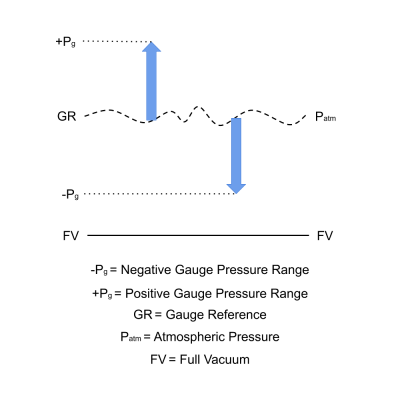 Occasionally it is necessary to measure negative pressure or pressures below the baseline reference pressure. It is only possible to do this with a gauge reference or differential pressure sensor. For example you may want to measure suction or vacuum pressure which are pressures between full vacuum and atmospheric pressure. Another example of measuring negative pressure would be to apply a reverse the differential pressure across an air filter periodically, as a preventive maintenance measure to clean the air filter and improve air flow.
Occasionally it is necessary to measure negative pressure or pressures below the baseline reference pressure. It is only possible to do this with a gauge reference or differential pressure sensor. For example you may want to measure suction or vacuum pressure which are pressures between full vacuum and atmospheric pressure. Another example of measuring negative pressure would be to apply a reverse the differential pressure across an air filter periodically, as a preventive maintenance measure to clean the air filter and improve air flow.
Compound Ranges
Negative pressure ranges can also be combined with positive pressure ranges to create a compound range or a bidirectional range. These can be used to combine vacuum and positive pressure ranges, or for measuring ventilation pressures in a duct where the air could be flowing in either direction.
Featured negative pressure sensor products
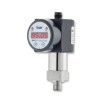 DS200 Combined Pressure Switch, Gauge and Sensor - Three in one electronic pressure switch, digital pressure gauge and pressure sensor with pressure ranges from 100 mbar up to 600 bar (1.5 to 9000 psi).
DS200 Combined Pressure Switch, Gauge and Sensor - Three in one electronic pressure switch, digital pressure gauge and pressure sensor with pressure ranges from 100 mbar up to 600 bar (1.5 to 9000 psi).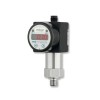 DS210 Combined Low Pressure Switch, Indicator and Sensor - Low range three in one pressure switch, pressure indicator and pressure sensor for use on pneumatics and HVAC applications.
DS210 Combined Low Pressure Switch, Indicator and Sensor - Low range three in one pressure switch, pressure indicator and pressure sensor for use on pneumatics and HVAC applications.
Liquid Head Pressure
It is also very common to use pressure sensors to measure liquid level by measuring the liquid head pressure. These pressure ranges are often specified in meters or feet of water column. Due to the variance in liquid density it is also possible to have specifically scaled ranges, for example 1.078 bar for a 10 metre high tank which contains a liquid of a slightly different density to water.
Featured liquid head pressure sensor products
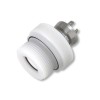 4-20mA Output Hydrostatic Level Transmitters & Sensors - Explore industrial 4-20mA hydrostatic level transmitters for reliable liquid depth measurement. Ideal for tank gauging, borehole control & process monitoring applications.
4-20mA Output Hydrostatic Level Transmitters & Sensors - Explore industrial 4-20mA hydrostatic level transmitters for reliable liquid depth measurement. Ideal for tank gauging, borehole control & process monitoring applications.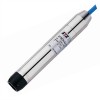 Underwater 50 metre sea depth 4-20mA output sensor - All titanium underwater sensor for measuring seawater depth with a measurement range of 0 to 50 metres providing a 4 to 20 mA output signal.
Underwater 50 metre sea depth 4-20mA output sensor - All titanium underwater sensor for measuring seawater depth with a measurement range of 0 to 50 metres providing a 4 to 20 mA output signal.
Related Help Guides
- Measuring vacuum with negative gauge or absolute ranges
- What is the difference between gauge and absolute pressure measurement
- What is the difference between vacuum and absolute pressure
- Measuring negative pressure using a positive differential pressure range
- Not reading zero when pressure is vented to atmosphere
- What is difference between working, burst and over pressure
- What does negative and positive gauge pressure mean
Related Technical Terms
- Bidirectional
- Burst Pressure
- FS – Full Scale
- Gauge Reference Pressure
- MSL – Mean Sea Level
- Negative Gauge Pressure
- Reference Pressure
- SG – Sealed Gauge
- Static Line Pressure
- Vented Cable
- Vented Gauge
Related Product and Application Guides
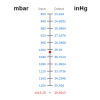 Barometric Pressure
Barometric Pressure Overpressure Protection
Overpressure Protection Hydrostatic Pressure
Hydrostatic Pressure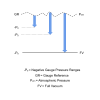 Suction Pressure
Suction Pressure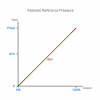 Absolute Pressure
Absolute Pressure Compound Pressure Ranges
Compound Pressure Ranges
Contact us about this How do you choose the correct pressure range for a pressure sensor page to request more information, or to discuss your application requirements.
